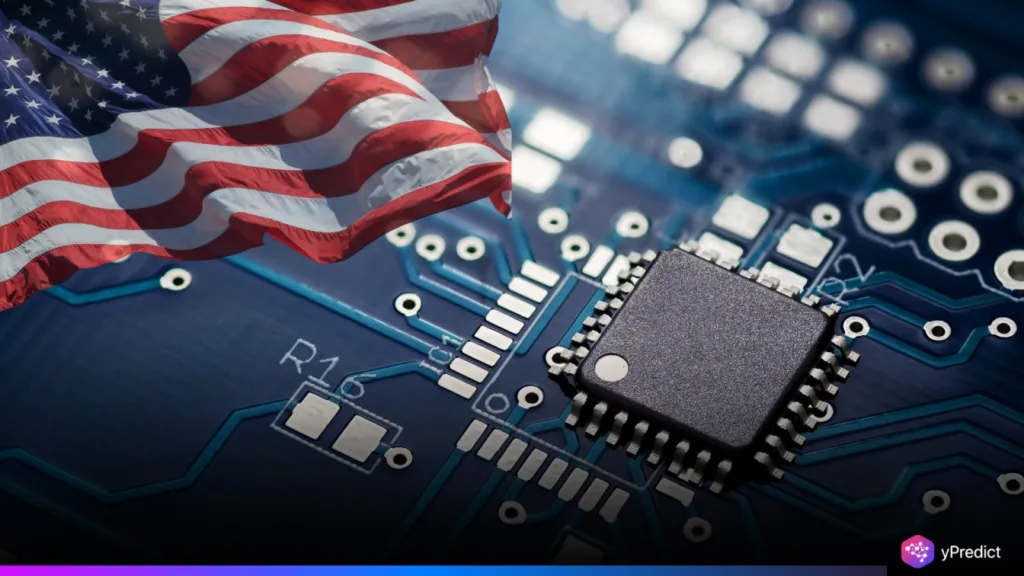
Malaysia has rolled out a new trade permit requirement for AI chips originating from the U.S., effective July 14, 2025. This action follows the U.S. Commerce Department’s export controls strategy restricting the flow of advanced GPUs to China. The permit requirement is not unlike the 2023 rule prohibiting the export of GPUs with an allocable TPP limit of 790 million until 2027.
These proposals support Malaysia as a compliant trade partner with Washington and enhance its development access in the emerging global AI hardware logistics space. Nevertheless, they potentially create delays in AI chip movement and raise alarms in the broader AI development communities as demand for high-performance chips, particularly in deep learning and AI development and generative AI, grows, as the new rule could reset the whole regional semiconductor supply chain.
TPP Limit Shapes Global Chip Strategy
The TPP limit has become a key benchmark in regulating global GPU exports. By enforcing a processing cap of 790 million, the U.S. aims to slow China’s access to cutting-edge AI computing. Malaysia’s compliance with this limit through a new permitting mechanism signals not only geopolitical alignment but also a deeper integration into the West’s chip control strategy.
The rule impacts chips designed for AI model training, inference engines, and robotics, most of which fall within the restricted TPP threshold. By controlling outbound shipments via trade permits, Malaysia creates a layered filter to ensure these AI chips don’t enter China through backdoor supply chains. This decision may frustrate developers relying on efficient logistics for model training, but it simultaneously boosts Malaysia’s credibility in secure AI chip processing.
Malaysia AI Chips at the Center of Supply Chain Realignment
Over the last two years, Malaysia has quietly become a critical player in the global semiconductor supply network. By 2024, the country will account for 40% of global back-end semiconductor processing, driven by rising investments from Intel, TSMC, and other tech giants diversifying away from China.
The new trade permit rule underscores Malaysia’s balancing act—supporting U.S. regulatory frameworks while safeguarding its dominant chip packaging and testing position. With geopolitical tensions escalating, Malaysia’s AI chips now act as a pivot point in regional AI hardware routing. The country’s growing influence may attract even more semiconductor manufacturing, testing, and packaging activities from global firms seeking regulatory stability.
AI Chip Logistics Faces New Bottlenecks
The introduction of permits is expected to trigger new delays in chip shipments, especially for companies operating under tight R&D schedules. According to a 2024 MIT study on chip supply chain resilience, any disruption in high-performance chip movement raises project costs by 15–20%. These cost spikes are particularly hard-hitting for startups and research labs dependent on U.S.-origin GPUs. With Malaysia now tightening controls, AI hardware developers may need to reroute orders through countries like Vietnam or India, where policies remain more flexible.
This shift, however, could create a longer-term opportunity for these emerging markets to grow their presence in AI chip assembly and delivery. Still, Malaysia’s efficient port infrastructure and seasoned semiconductor labor pool offer an edge, making it likely that firms will accept the regulatory hurdles in exchange for predictable compliance under the TPP limit regime.
Global AI Ecosystem Enters Regulatory Phase
The intersection of AI advancement and geopolitical regulation has entered a new stage. As Malaysia aligns with U.S. export control rules, the broader AI industry must now work within a more tightly managed semiconductor supply environment. While this may slow short-term innovation in model deployment and training, it also secures supply chains from misuse or diversion. The Malaysian AI chips permitting policy is not just a trade rule—it’s a signal that national governments are embedding AI hardware within their diplomatic strategies. For AI developers, the next frontier won’t be just about model design or data, but about navigating regulated access to the chips that make it all possible.






